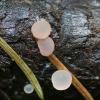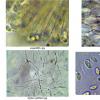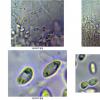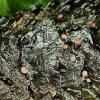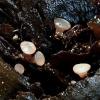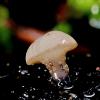
17-04-2017 10:06
 Bernard CLESSE
Bernard CLESSE
Bonjour à tous,Récolté en Forêt Noire (Schwarz

17-04-2017 08:48
 Angel Pintos
Angel Pintos
Lophiostoma quadrinucleatum? Ascomata gregarius,

15-04-2017 18:25
 Zoltan Lukacs
Zoltan Lukacs
Hi,Spores: 15,12-16,2 x 7,56-8,1 micron.The spores

15-04-2017 06:37
Roland LabbéBonjour !J'aimerais savoir si le genre Tolypocladi

29-05-2014 22:21
Bonsoir à tous,Pour vérifier la détermination d

14-04-2017 18:16
Thorben HülsewigHi there,i found under rotten wood, these fungus o

13-04-2017 19:42
 Andgelo Mombert
Andgelo Mombert
Bonsoir à tous,Je vois sur indexfungorum que Cibo

13-04-2017 21:13
Steve ClementsBonjour,Nous avons trouvé une Lachnellula avec de

13-04-2017 14:04
Hi to everybodyThese minute, pulvinate, broadly se
Ombrophila janthina sur cône d'épicéa (Picea abies) ?
Bernard CLESSE,
17-04-2017 10:06
 Bonjour à tous,
Bonjour à tous,Récolté en Forêt Noire (Schwarzwald), en pessière-sapinière, sur cône pourri et imbibé d'épicéa.
a) spores ellipsoïdes-fusoïdes, avec microguttules : 5,2-6x2,5-3
b) excipulum presque complètement gélatinisé
c) asques IKI+
D'accord pour Ombrophila janthina ?
Bernard
Peter Püwert,
17-04-2017 10:58
Bernard CLESSE,
17-04-2017 11:22

Re : Ombrophila janthina sur cône d'épicéa (Picea abies) ?
OK Peter,
Great thanks for your opinion and pictures !
Bernard
Great thanks for your opinion and pictures !
Bernard

